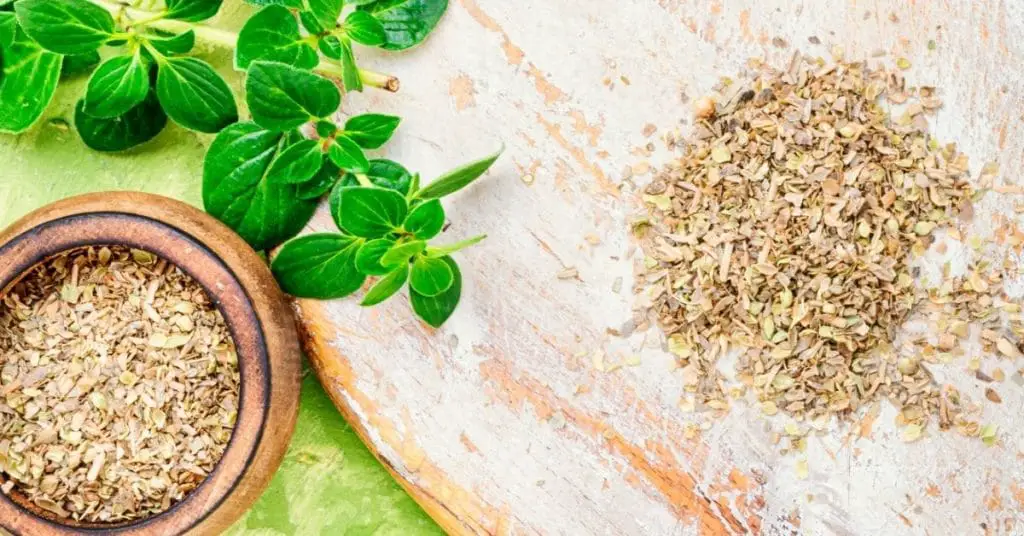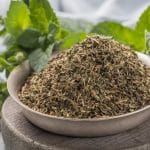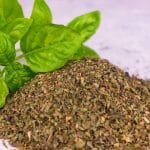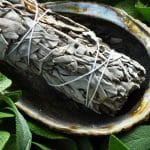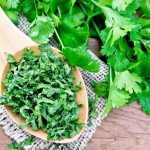In summary: There are three ways to dry oregano: hang drying, oven drying, and microwave drying.
Oregano’s earthy flavor makes it suitable for use in a variety of savory applications. It is traditionally used in sauces, salad, vegetable seasoning, kebabs, and fish dishes.
If it’s time to harvest oregano from your herb garden but you can’t possibly use everything within a week, drying is a great food preservation method to avoid waste.
Also known as the ‘pizza herb,’ the oregano plant is perfect for drying since the flavor is actually enhanced when dried.
Here is a full guide to drying oregano naturally and successfully.
Can You Dry Oregano?
Yes, you can dry fresh oregano. In fact, the herb actually has a more pronounced flavor when dried.
So, what is the best way to dry oregano? There are several ways to dry the herb including air-drying, using a dehydrator, and oven drying. The best method for you will depend on the climate, time, and equipment you have available. Most people who live in humid climates avoid the hanging method and opt for the oven or dehydrator.
Although slower methods using low heat are better for flavor preservation, an easy way to dry fresh oregano quickly is in the microwave.
To prevent mold when drying oregano, it is important to make sure that the leaves are completely free of moisture before packing. Mold will develop if any moisture is present.
Always store oregano in a a cool dry place, out of direct sunlight.
How To Dry Oregano
Rinse the fresh oregano leaves lightly under cold water to remove dirt, chemicals, and small insects. After you wash oregano, never start the drying process until the herbs are completely dry.
Place the leaves on clean paper towels and pat dry (you can also use a salad spinner). If the leaves are still a little wet, leave the excess water to air dry.
Option 1: Hang Drying
Step 1: Tie Bundles
Tie a few oregano stems together with a piece of string, rubber band, or twist tie. To ensure even drying, don’t make the bundles too big.
Step 2: Hanging Herbs
Hang the bundles of oregano sprigs to dry from a hook or wall tack. To protect the herbs from dust, cover each bundle with a perforated paper bag or muslin cloth. Punch holes in the bag and leave the bottom open. Do not use plastic as this will prevent airflow and cause mold.
Choose a light area with good air circulation to hang the sprigs. After 2 weeks, the leaves should be dry, shriveled, and brittle. Completely dry leaves should break easily when you handle them.
Step 3: Pack and Store Dried Oregano
Working over a bowl, run your fingers down the sprig stem to remove the leaves. Crumble the dried leaves into small pieces. They should break with little effort.
You can store the leaves whole, however, the smaller pieces are easier to use in dressings and more palatable when incorporated into dishes.
Store the dried, crushed herbs in a mason jar or container with a lid and label it with the date and contents.
Option 2: Oven Drying Method
Step 1: Preheat Oven
Set your oven to its lowest temperature setting around 170 °F to 200 °F (93 °C) to heat up.
Step 2: Prepare Leaves
Take the cleaned oregano sprigs and lay them out on a metal baking sheet lined with parchment paper in a single layer so that they do not overlap each other.
Step 3: Bake
Place the tray of herbs in the oven and prop the oven door open slightly to allow for airflow. Turn the leaves after 20 minutes to allow even drying on both sides. Return the tray to the oven center rack for another 20 minutes.
After 20 minutes, check on the leaves. If they are not dry yet, turn again and place them back in the oven, checking on them every 5 minutes. Depending on how many leaves you are drying, it will take up to an hour.
Remove the baking tray from the oven. When completely dry, the leaves should crumble easily when pinched between your fingers.
Step 4: Pack
Run your fingers down the sprig stem to remove the leaves and crumble them into smaller pieces. Store the oregano in resealable plastic bags, spice bottles, or airtight containers. Label with the date and contents.
Option 3: Microwave
This is the fastest way to dry oregano leaves with hardly any prep time. However, you might not get the most flavor.
Place oregano sprigs or leaves evenly on a paper towel in a single layer so that they do not overlap. Lay another paper towel on top to cover the leaves. Microwave for 60 seconds on a high-power setting.
Thereafter, microwave in 15-second intervals until the leaves are dry and crunchy.
Remove the leaves from the sprigs and crumble them. Package the dried herbs in a labeled glass jar or airtight container.
Types of Oregano
Oregano is sometimes referred to as wild marjoram, although it has a much stronger flavor than marjoram. The fresh herbs have purple flowers with olive-green color leaves.
The aromatic herb is popular in Mediterranean cooking, especially in Italian, cuisine. Climate, season, and soil composition can all play a part in the strength of the flavor.
Although used worldwide, oregano’s most renowned use is in pizza and pasta sauces. It is also popularly used with roasted, and grilled vegetables, as well as meat, and fish dishes. Oregano is a staple in Greek and Mediterranean salads with olive oil dressings.
FAQs
Conclusion
Add dried oregano leaves to your pizza and pasta for an authentic Italian flavor. The method you choose to dry oregano will depend on the time and equipment you have available. If you live in a very humid climate it is best to avoid hanging it to dry.
Regardless of which method you choose, ensure the fresh herbs are completely dehydrated before packing. This way you will be able to enjoy marvelous flavor from your dry herbs for over a year.
Up next: how to dry basil
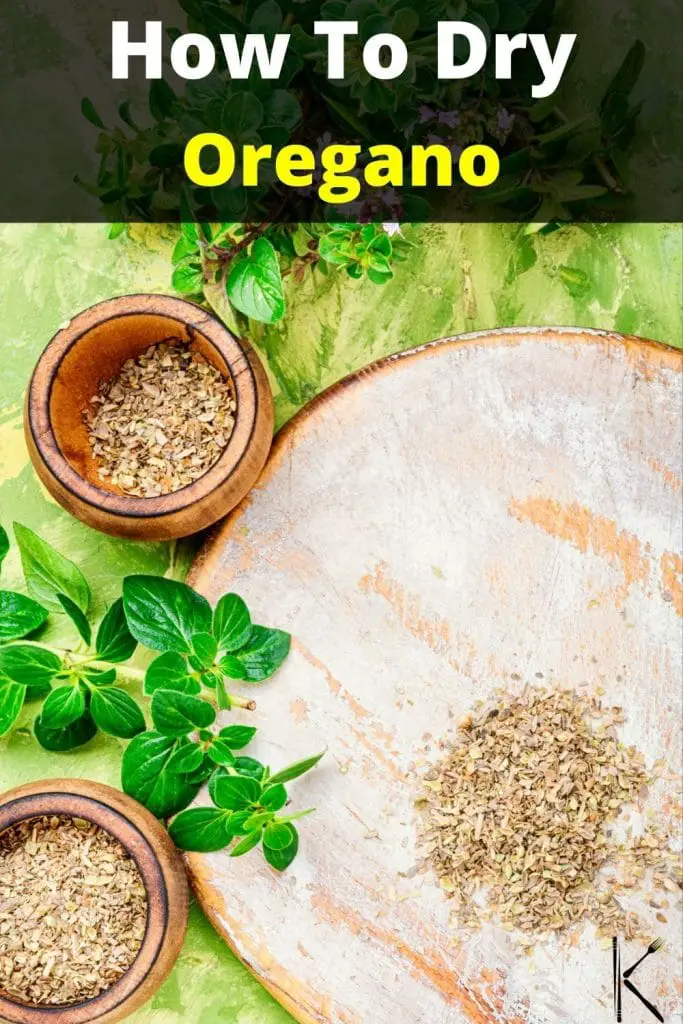
*image by Nikolay_Donetsk/depositphotos
